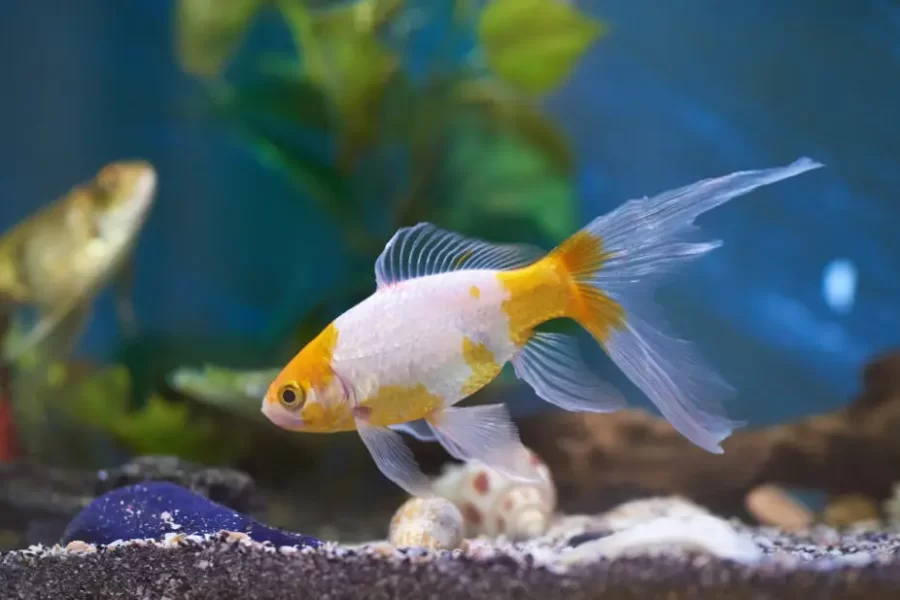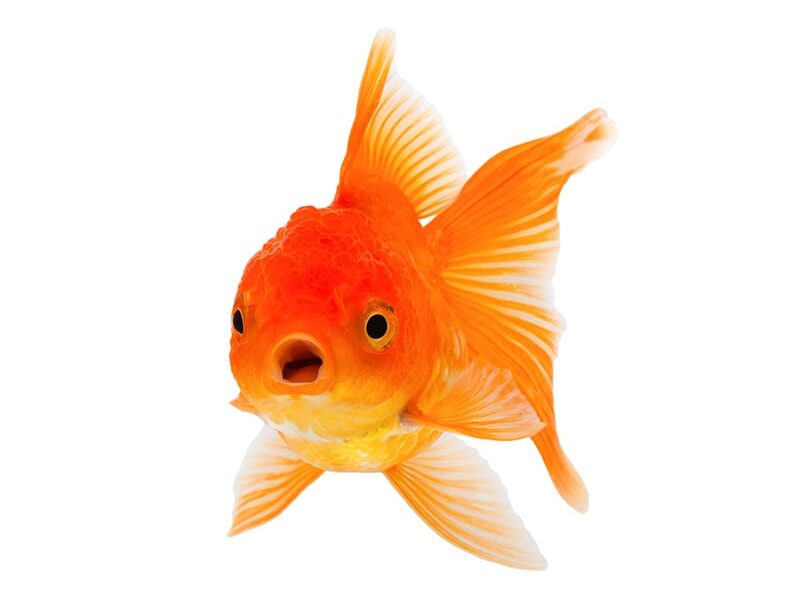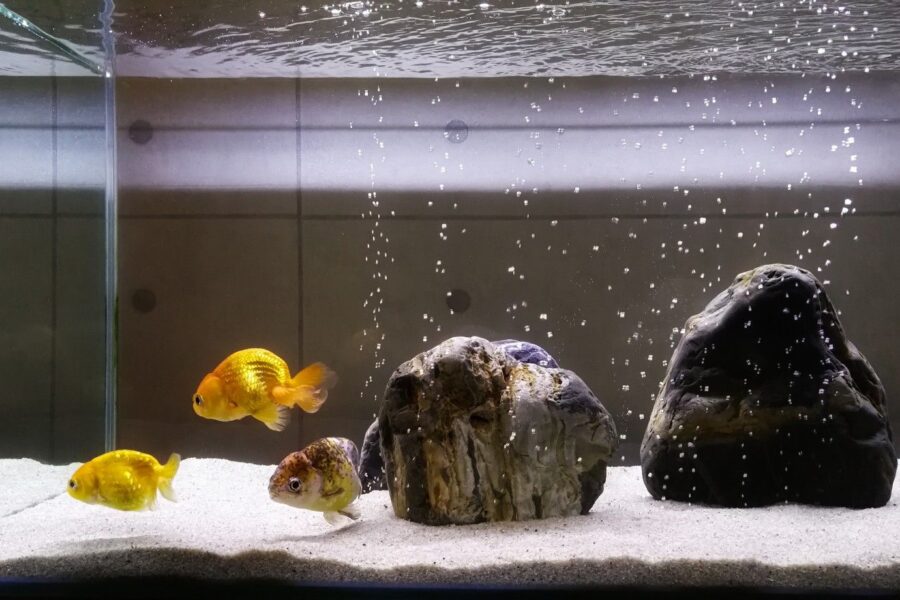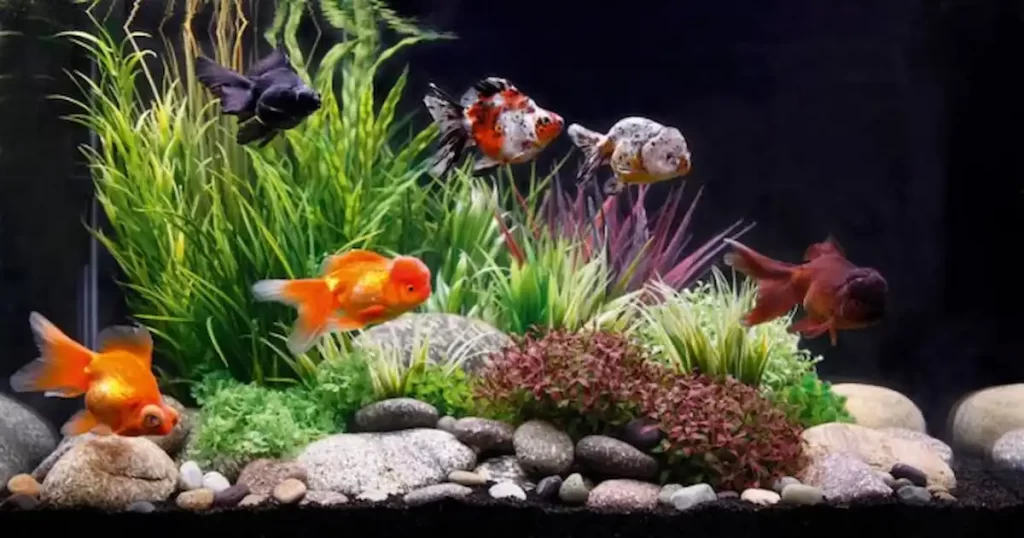
“Goldfish Hide All the Time” – if this sounds like a headline describing your little aquatic friend’s life, you’re not alone. Many goldfish parents find themselves playing hide and seek with their finned buddies, often wondering why their seemingly social fish has turned into a shy, retiring wallflower.
From auditioning for ‘Finding Nemo: The Sequel’ to just feeling a bit under the weather, there are several reasons why your goldfish may be keeping a low profile. Let’s put on our detective hats and solve the mystery of your goldfish’s disappearing act!
Understanding Goldfish Behavior
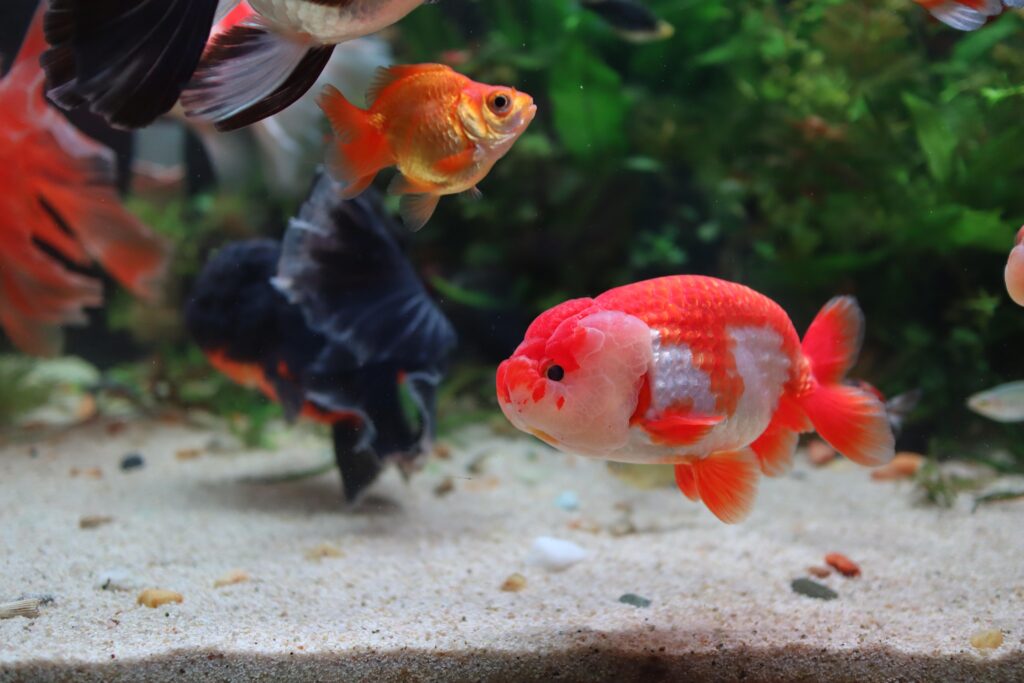
Brief About Typical Goldfish Behavior
Ah, goldfish. The star of childhood memories and county fair prizes. Like any pet, goldfish have typical behaviors that signal they’re happy and healthy. Active swimming, stimulated responses to their surroundings, and a hearty appetite are just a few.
What Changes Can Be Alarming in Their Behavior
So, you’ve got your goldfish and you’re loving it. Then, bam! Your rainbow-shimmying buddy starts acting weird. Maybe it’s swimming in one place, showing a loss of appetite, or seems to prefer isolating itself. Such changes can be alarming, hinting at potential stress or health issues.
Understanding Their Hiding Behavior in Particular
But what if your goldfish is more of a ‘Hide-n-Seek’ champion than a disco diver? Should you be worried? Sometimes, yes. Hiding is unusual for goldfish, who are normally highly social and active creatures. If your fish is playing hide-and-seek without you, it’s time to delve deeper into the fish tank and find out why.
Now that you have a firmer grip on the slippery topic of goldfish behavior, it’s time to tackle the reasons behind the game of hide and seek. Discover the top causes (BTW, ‘training for a goldfish hide and seek championship’ isn’t one of them). Let’s ‘dive’ right in!
Reasons Why Goldfish Hide All the Time
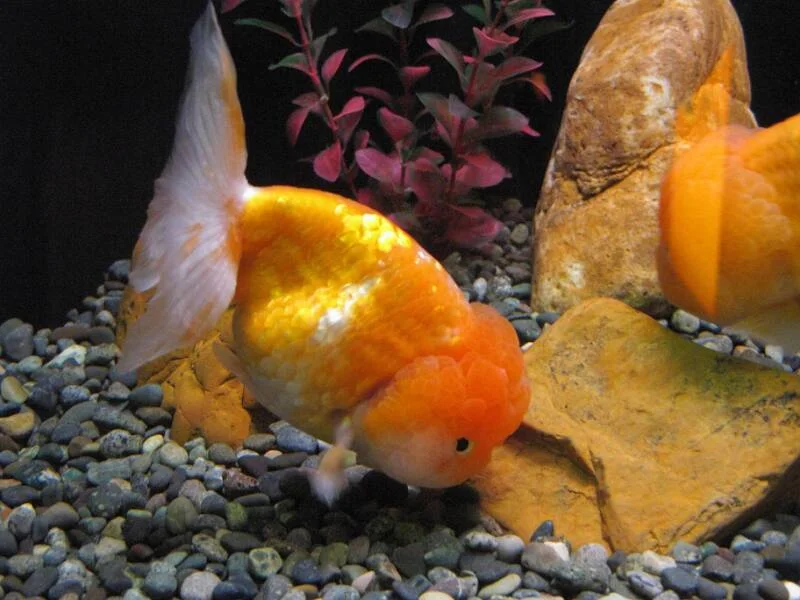
So you’ve noticed your goldfish playing hide-and-seek sans the seek part. Seems fishy, doesn’t it? Let’s explore some root causes of why your finned friend might be hiding.
Stress or Fear
Imagine you’re stuck in a tank and giant, fleshy intruders keep tapping on your world. That would stress you out too, right? For fish, stress can be triggered by constant human interaction (like those pesky tapping fingers), overfeeding, or sudden changes in environmental factors like light and temperature.
Poor Water Conditions
That tank isn’t just a tank, it’s your goldfish’s home sweet home. If the water is too dirty, too clean, too hot, too cold, too soft, or too hard, it may send your fish friend diving for cover. Regular water check-ups should help keep things smooth swimming.
Sickness or Disease
Just like you’d rather stay in bed when you’re feeling under the weather, a sick goldfish might cozy up in a secluded spot. If you notice other changes like loss of appetite, white spots, or slow movements, it could indicate illness.
Dominance or Bullying in a Multi-Fish Tank
You know the saying – there’s always a big fish. In multi-fish tanks, there can be dominant goldfish that might bully their tank mates. The bullied fish may feel safer hidden from their finned bullies.
Lack of Stimulation in the Aquarium Environment
Remember being bored as a kid and hiding in a cupboard just for kicks? Goldfish might feel the same way. Without enough plants, rocks, or toys to investigate, your goldfish may decide to retreat to its favorite hiding spot to pass the time.
So you’ve figured out possible reasons why your goldfish might be playing hide-and-goosefish. Great! Now you’re probably curious about what to do next, right? Heading over to the next section will outline some practical steps you can take to improve your goldfish’s living conditions and hopefully lure it out of hiding.
What to Do When Goldfish Hide All the Time

It’s a quiet Sunday evening. You walk over to your aquarium. Suddenly you notice: your goldfish is pulling a Houdini. It’s hiding like an introvert in a speed-dating event. What to do? Fear not! Here’s the low-down.
Inspect the Tank Environment
Throw on your best Sherlock Holmes cap. Time to investigate your fish’s living conditions. Is the tank too crowded? Are there enough hiding places? Are Taco Tuesday leftovers mucking up the waters? Make sure you have a healthy balance. Kind of like how you crave a salad after binging on that extra bag of Doritos last night.
Check for Signs of Stress or Sickness
It’s time to play Doctor Dolittle and make sure your fishy friend isn’t under the weather. Check for any signs of disease. Look for faded colour, loss of appetite, difficulty swimming, and Red Eye (it’s not just humans after a night out). If you see any of these signs, your beloved goldfish might be a little poorly.
Test Water Conditions
Now, get ready to don your mad scientist persona. You’re about to test the water conditions. Remember, a goldfish is like a Xerox machine, it doesn’t work well with heat or cold adjustable environments, it likes a consistent water temperature. So make sure the pH level, ammonia, nitrite, and nitrate levels are all in the goldilocks zone.
Consult a Vet if Necessary
If your goldfish’s condition doesn’t improve, it’s time for a professional intervention. Just like you would visit a doctor if your snuffles turns into a full-fledged flu, take your goldfish to a vet if situation worsens.
After piecing all the clues together, you have a plan of action. But how do you prevent your goldfish from playing hide-and-seek in the first place? Excellent question. Gentle reader, it’s time to flow into the next section: Preventing Your Goldfish from Hiding. Hold that bowl of popcorn tight, and let’s swim to the next section!
Preventing Your Goldfish from Hiding
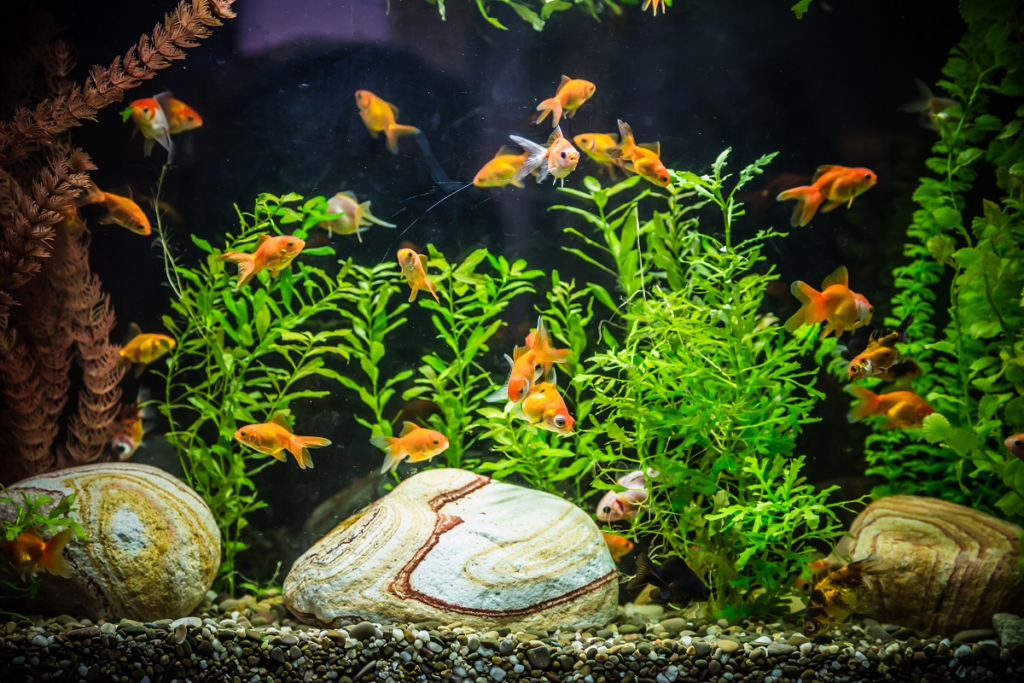
Now that we’ve dived into the murky waters of goldfish psychology, let’s swim toward prevention. We’ll explore strategies to keep your goldfish from turning into a hide-n-seek champion.
Maintain Good Water Conditions
You wouldn’t enjoy a dirty, smelly bathtub, would you? Goldfish feel the same way about their water. Regularly check the pH, ammonia, nitrate levels, and temperature to keep your goldfish happy. A water testing kit goes a long way to help you maintain optimal water conditions.
Provide Plenty of Safe Hiding Spots
Ironically, to stop your goldfish from hiding, you need to provide hiding spots. Paradoxical, isn’t it? Perfectly safe places like caves, plants, or decorations will satisfy your goldfish’s natural urge to hide. It helps it to feel safe without disappearing into thin water.
Provide Enough Stimulation
Goldfish aren’t great at Sudoku, but they do enjoy exploring. Keep things stimulating with a variety of tank ornaments. Change them around once in a while. It’s like giving your goldfish a new underwater adventure every few weeks.
Monitor Interaction If In a Multi-Fish Tank
Playing well with others isn’t just for kids. If you have multiple fish, monitor their interaction. Unwanted attention or bullying from tank mates can make your goldfish feel threatened. Save it from having to relive its high school days.
As we finish up with prevention, let’s turn our flippers to the final frontier – creating the perfect goldfish paradise… After all, they deserve a little luxury in their aquatic lifestyle!
Creating a Comfortable Environment for Your Goldfish
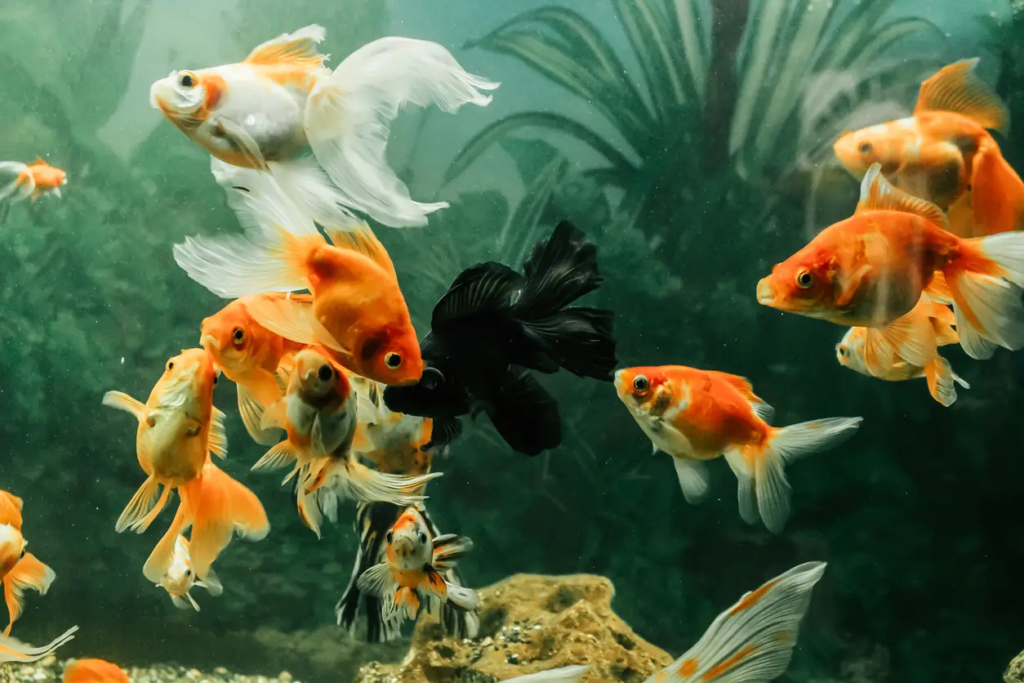
Splashing into the final section of this guide, let’s dive into tank setup. We’ve chatted about your goldfish’s elusive behavior, now let’s look at how to make their home a haven. It’s not just about throwing a castle and a plastic plant in a bowl and calling it done.
How to Properly Set Up a Goldfish Tank
Our water-dwelling buddies need some thoughtful setup. Think of it as your goldfish’s zen garden – it needs to be peaceful, pleasant, and properly arranged.
- Ensure to have a tank that’s adequately large enough. Remember, good space is like a big house party to goldfish.
- Your tank setup should mimic their natural habitat, so it’s not just about aesthetics.
- Use gravel or small stones at the bottom so they can root around like they do in nature.
Feeling comfortable with tank setup? Perfect, because next, we’re scratching beneath the surface, literally, with filtration.
Choosing the Right Water Filtration System
If you think cleaning your room is tough, imagine cleaning your entire world! Goldfish can’t tidy up their tank, which is why we need a good filtration system! This takes care of excess food, waste and keeps the water clean. Be Johnny-on-the-spot with your filtration. Fish waste creates ammonia, which is harmful to your finned friend, so choose a system that removes this effectively.
Sliding over from filtration, let’s discuss tank decorations. Or as we call it in the fish world, interior design!
Selecting Appropriate Tank Decorations
Who doesn’t like a nicely decorated home? Your goldfish sure does! Add items that can serve as hiding places like caves or artificial plants. Be cautious with sharp edges, though. You wouldn’t want your goldfish to get a nasty nip while navigating their new surroundings. Plus, avoid items that may alter the water’s pH, like shells or certain rocks.
And there, my dear goldfish friends, we’ve reached the end! Now you know why your goldfish may be playing hide-and-seek and also how to create a comfy environment for them. Happy fish-keeping!
To Sum Up
In summary, a vital aspect of goldfish ownership is understanding their behavior, particularly their proclivity for hiding. Changes in this behavior may signify trouble—either stress, poor water conditions, illness, dominance struggles in multi-fish tanks, or simply boredom. Hence, prompt action, such as inspecting the tank environment, checking for signs of stress or sickness, testing water conditions, and consulting a vet are advised.
However, prevention is better than the cure. Maintaining good water conditions, providing safe hiding spots, ensuring enough stimulation, and monitoring interactions in multi-fish tanks can help prevent unexpected behavioral changes. Additionally, setting up the goldfish tank correctly, choosing the right water filtration, and selecting appropriate tank decorations contribute to creating a comfortable environment for your colorful friends.
Frequently Asked Questions (FAQ)
Question: Why does my goldfish hide more than usual?
Answer: Your goldfish may be hiding more than usual due to several reasons such as increased stress, poor water conditions, or possibly illness.
Question: What are the signs of stress in my goldfish?
Answer: Rapid gill movement, loss of appetite, abnormal swimming, and color change are common signs of a stressed goldfish.
Question: How can I check the water condition in my goldfish’s tank?
Answer: To check the water condition, utilize an aquarium testing kit which measures levels of pH, ammonia, nitrites, and nitrates in the water.
Question: What can I do if I suspect my goldfish is sick?
Answer: If you suspect your goldfish is sick, separate it from others and consult with a vet who specializes in fish.
Question: How can I prevent my goldfish from continually hiding?
Answer: Maintain optimal water conditions, provide safe hiding spots, offer enough stimulation, and monitor their interaction if there are other fish in the tank.
Question: How do I set up a comfortable environment for my goldfish?
Answer: To set up a comfortable environment, choose an appropriate size tank, select a good water filtration system, and decorate the tank to offer hiding places and stimulation.

